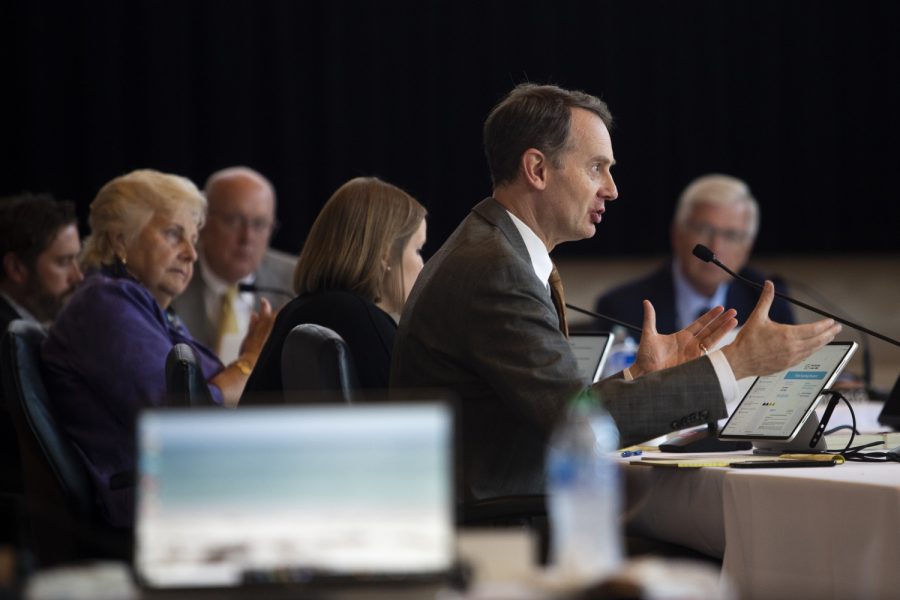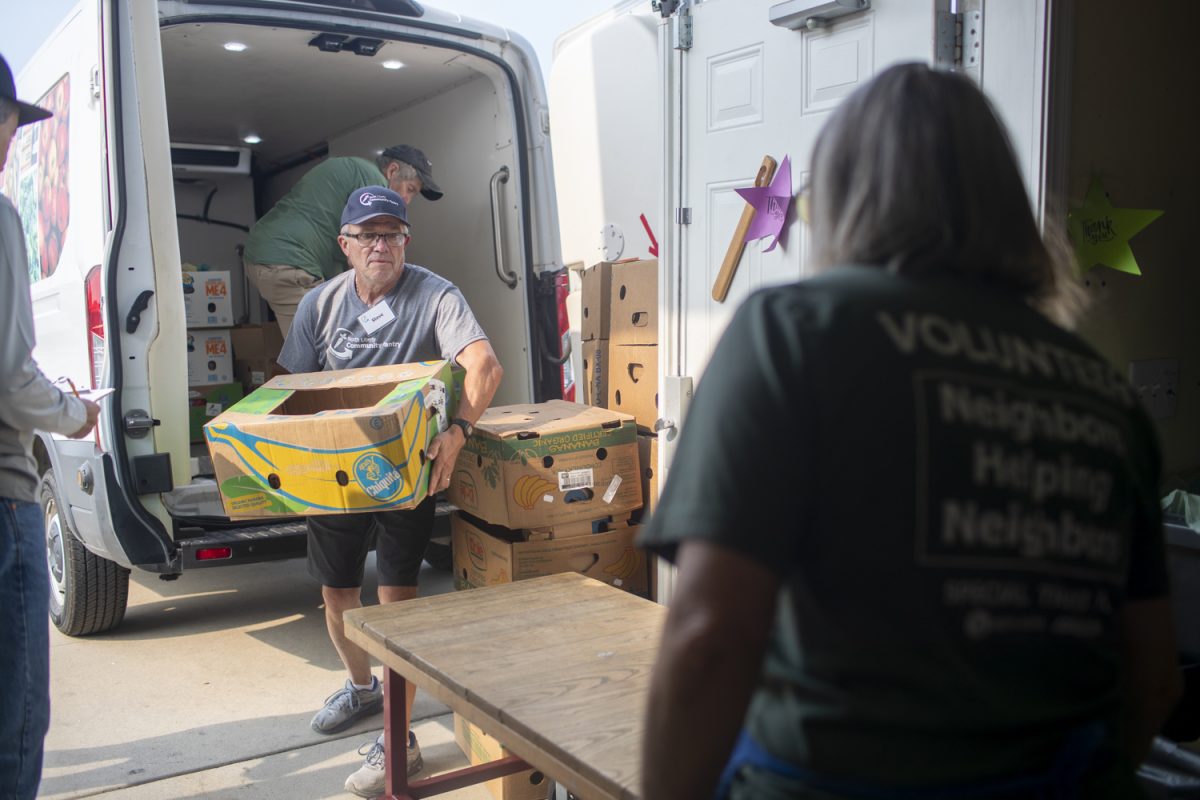By Emi Bendler
and Marissa Payne
AMES — As enrollment continues to climb, making each incoming class historically larger than the previous one, University of Iowa officials are working to figure out where housing occupancy fits into the equation.
Housing & Dining officials from the state’s three public universities — the UI, Iowa State University, and the University of Northern Iowa — discussed five-year plans for their respective institutions at the state Board of Regents’ meeting at ISU on Thursday.
Von Stange, the assistant vice president for Student Life and senior director of UI Housing & Dining, said 94 percent of first-year students live on campus.
“Our first-year students who live in our residence halls have better outcomes than those who don’t,” Stange said.
Continuing enrollment growth has posed housing-shortage challenges at the UI. According to regent documents, the operating occupancy of UI residence halls in fiscal 2017 is 6,405 students.
However, the total occupancy is 6,864 students. The UI turns to expanded-housing options when it is over capacity, meaning up to eight students can be placed in lounges on certain residence-hall floors.
Jacob Simpson, the UI Student Government City Council liaison, said he thinks living in the residence halls is beneficial for first-year students.
UI Housing & Dining tries to accommodate students who request to live in the residence halls, Simpson said, while making an effort to decrease the number of students who have to live in expanded housing.
RELATED: Student enrollment increase causes problems for some
Simpson cited the performance-based funding proposed a few years ago by the regents that caused the UI to recruit in-state students as the reason for the increase in enrollment each year.
“We will see that again next year even though the university has determined that it wishes for enrollment to remain constant,” Simpson said.
With the resource implications faced by the university, UI President Bruce Harreld said during an oral report at the regents’ meeting he believes the school is at the size it should be at.
“The issue here is not to be larger, it is actually being excellent across everything we do,” he said.
One step the UI has taken to manage this growth was setting a March 1 admissions deadline for those hoping to enroll in the fall of 2017.
“We hope that the March 1 timeline will give us some level of control as we track enrollment projections to ensure that we are able to provide incoming students with the resources and accommodations they need to be successful in their first year of enrollment,” said Brent Gage, the UI associate vice president for Enrollment Management in an email to The Daily Iowan.
Since Quadrangle was torn down in 2016, the UI has been in a period of limbo in terms of boosting residency system capacity this year with Catlett Hall being constructed for its opening in this fall. To solve these problems, Stange said the number of triple rooms offered this year was increased, and fewer returning and transfer students were able to return to the residence halls.
“We’re going to invite all returning and transfer students to live with us in the residence halls,” Stange said. “That’s a demographic that has shown more interest in remaining in the residence halls, and we would invite them to live with us beyond their first year.”
The regents’ report addressed the increase in price of living in the residence halls, going from $9,967 in fiscal 2017 to $10,015 in fiscal 2018.
Simpson said he doesn’t believe the increase in the price of living in the residence halls is significant enough to affect the students’ desire to live there.
Final approval of residence hall and board rates is set for the April regents meeting.










